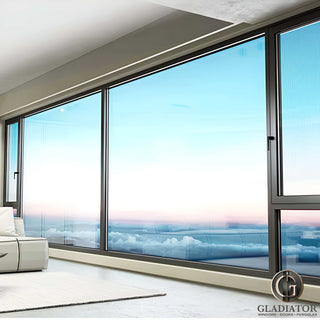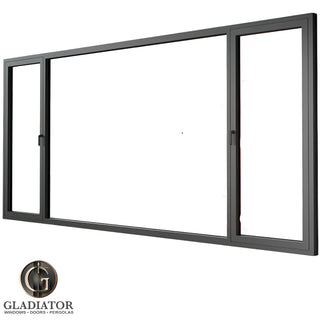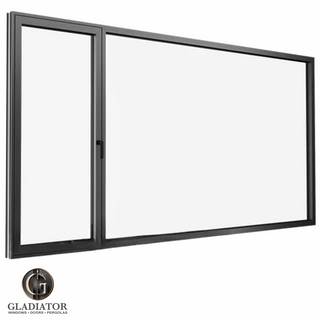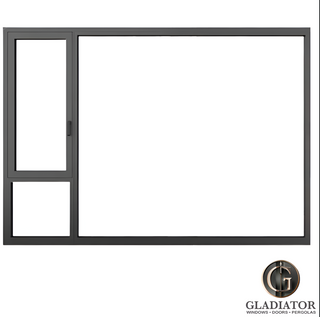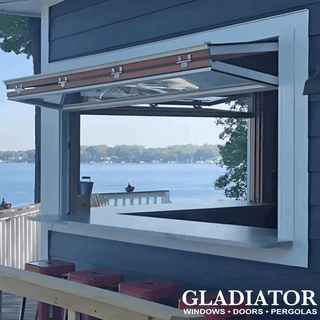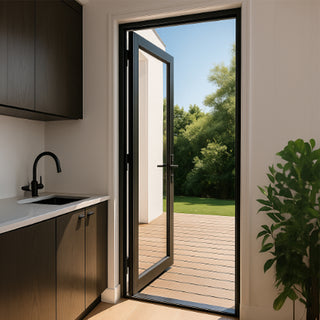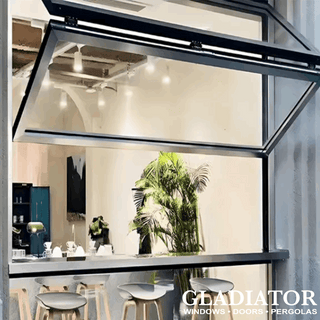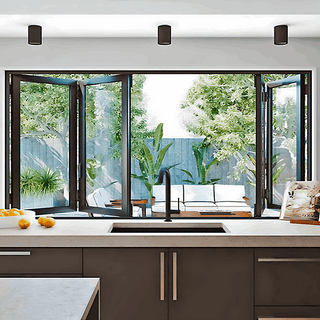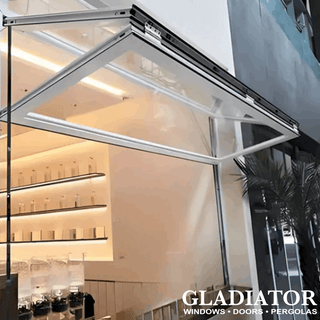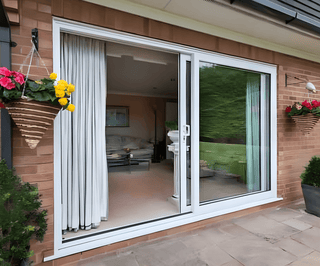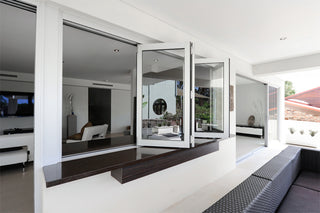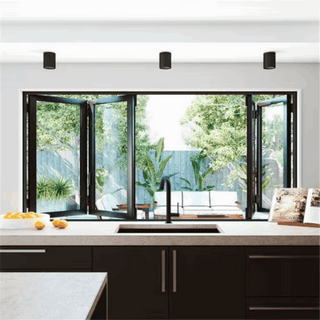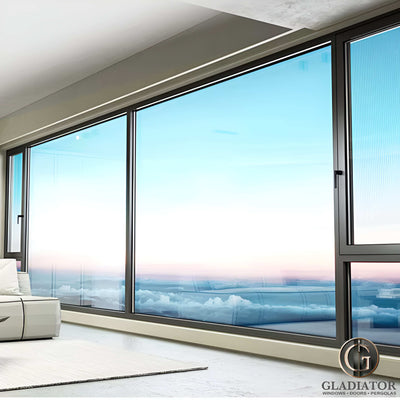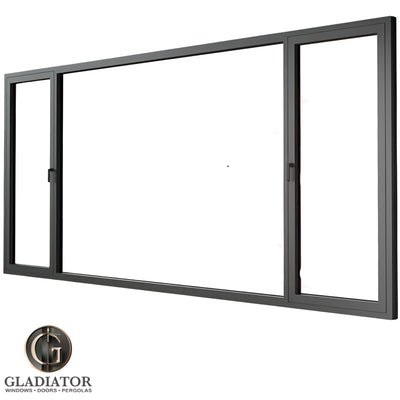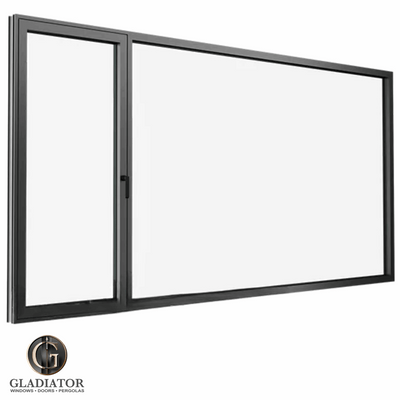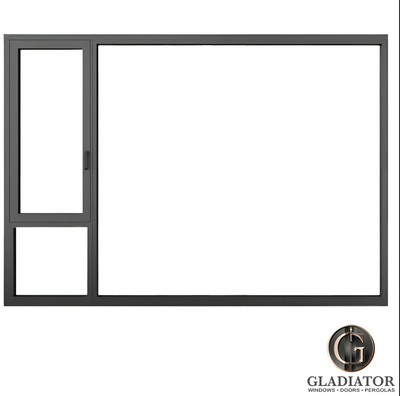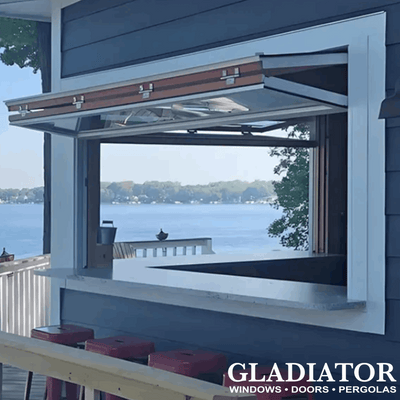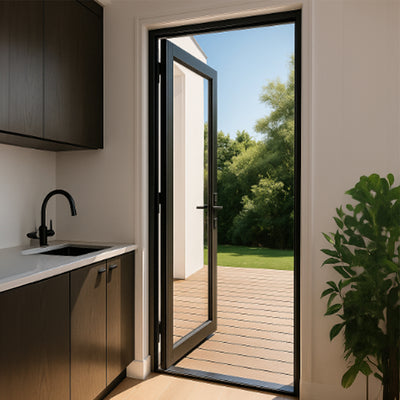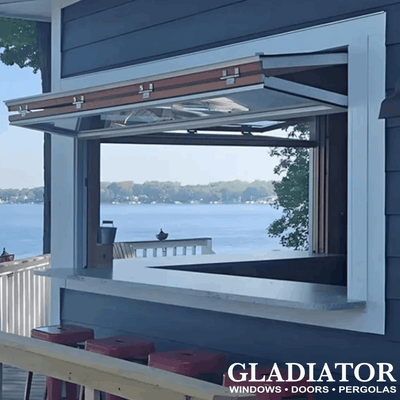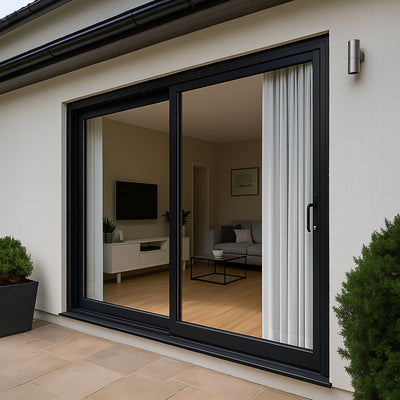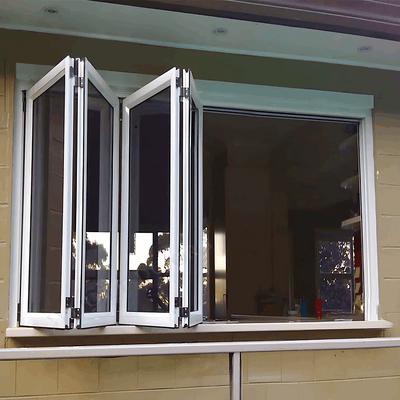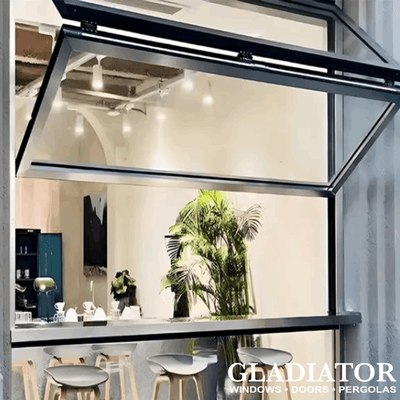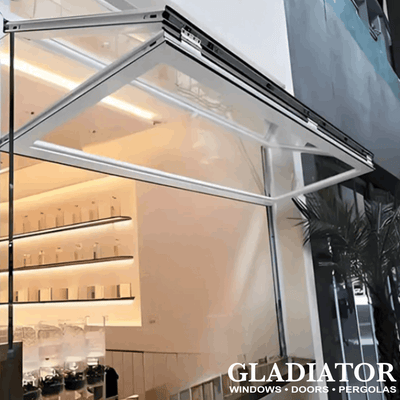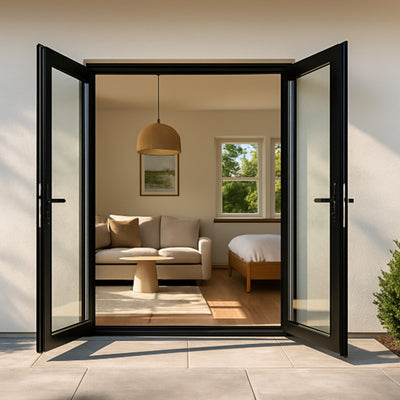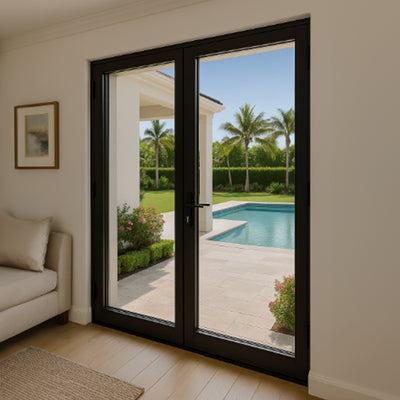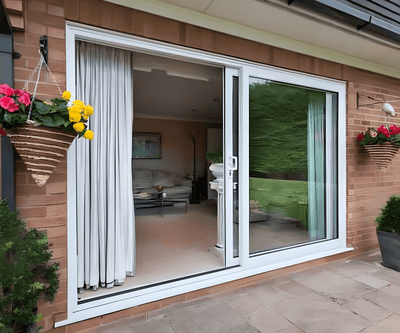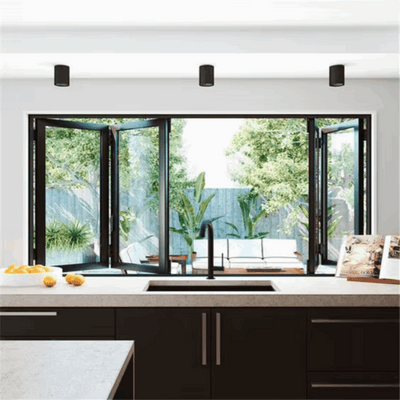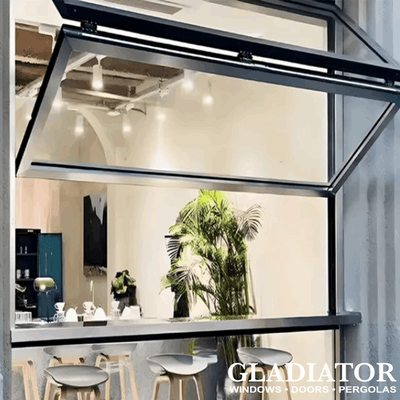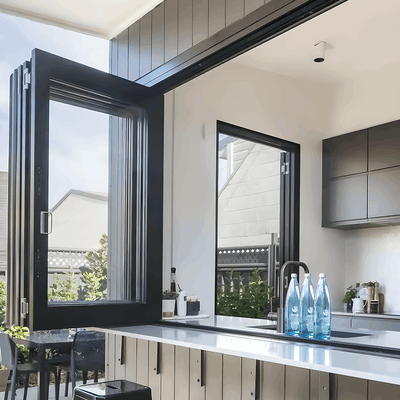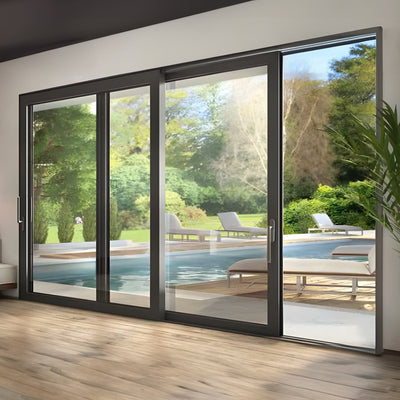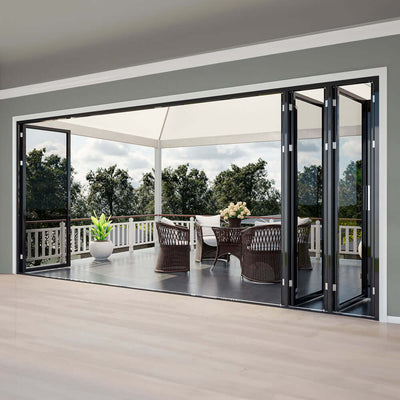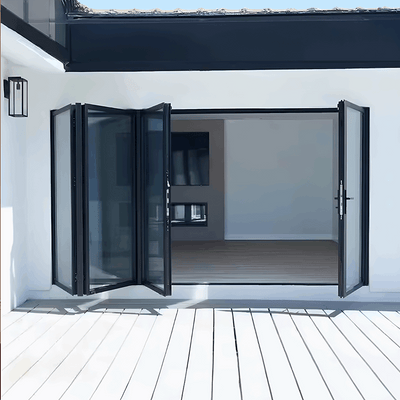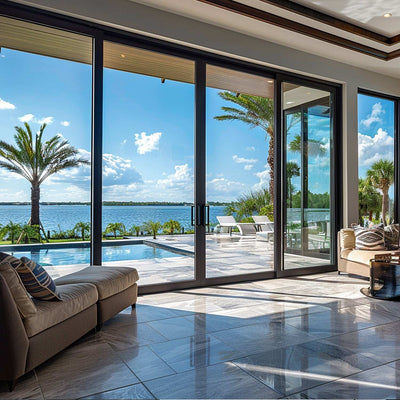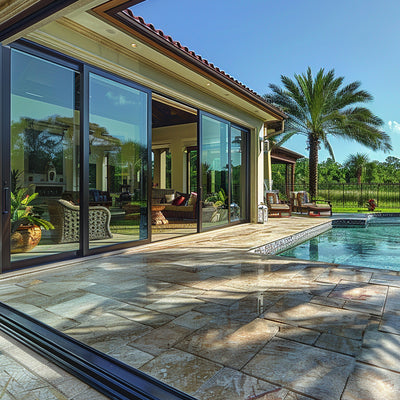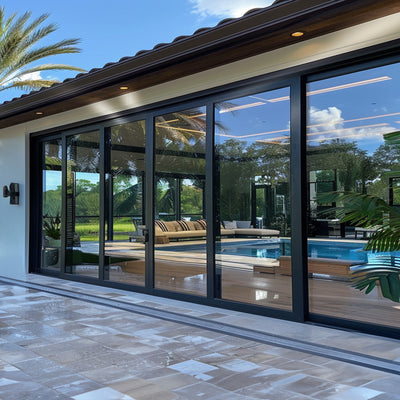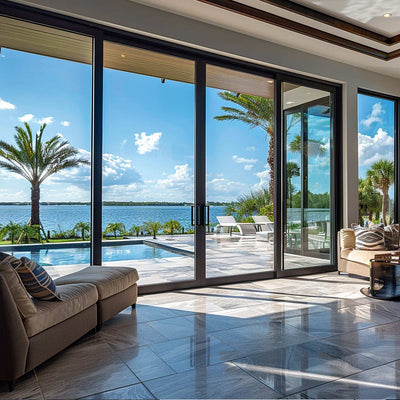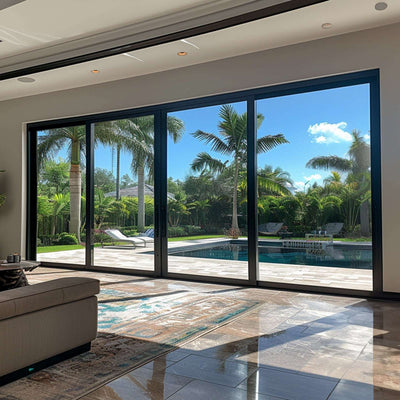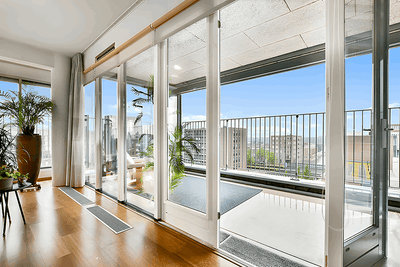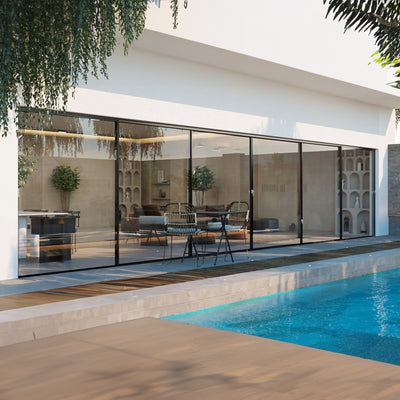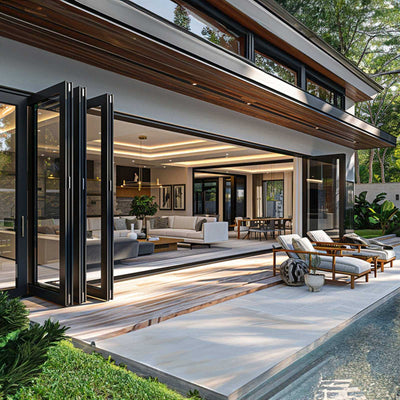Understanding Energy Efficient Windows: Beyond the Basics
Energy-efficient windows are a smart investment for homeowners looking to boost comfort and lower energy bills. They offer a significant upgrade over standard windows, contributing to a more sustainable home. But what exactly sets them apart? It's more than just having two panes of glass. Let's explore the key components that make these windows so effective.
Key Components of Energy Efficient Windows
-
Multiple Glazing: Double-paned windows are a good start, but triple-paned windows take insulation to the next level. Each pane of glass adds an extra air pocket, creating a barrier against heat transfer, much like layering clothing on a cold day.
-
Low-E Coatings: These microscopic coatings, applied to the glass surface, reflect infrared radiation. During winter, they reflect heat back into the room. In the summer, they reflect the sun's heat away, keeping your home cooler.
-
Gas Fills: The space between glass panes is often filled with inert gases like argon or krypton. These gases are denser than air, further slowing heat transfer and boosting the window's insulation. Think of it like a down-filled jacket, which traps heat more effectively than one filled with air.
These three features work together to maximize energy efficiency. Combining triple glazing, low-e coatings, and argon gas fills creates a powerful barrier against heat transfer, significantly reducing energy loss. As a bonus, these features can also dampen noise and block UV damage, creating a more comfortable living space.
Decoding Energy Performance Ratings
Understanding window performance ratings is essential for informed decisions. Key metrics to consider include: You might be interested in: Our blog articles.
-
U-Factor: This measures how well a window prevents heat loss. A lower U-factor indicates better insulation, similar to the R-value of wall insulation.
-
Solar Heat Gain Coefficient (SHGC): This measures how much solar heat passes through the window. A lower SHGC is preferable in warmer climates to reduce heat gain.
-
Air Leakage: This measures airflow through gaps in the window assembly. A lower rating means a tighter seal and fewer drafts.
The growing emphasis on sustainability is boosting the demand for energy-efficient solutions. The market for these windows was valued at approximately USD 15.19 billion in 2023 and is projected to grow at a CAGR of 7.7% through 2030. This growth is driven by increasing environmental awareness and government incentives for energy-efficient buildings. Find more detailed statistics here. Choosing the right energy-efficient windows can make a real difference in your home's comfort and your energy bills, making them a valuable investment.
Breakthrough Technologies Transforming Window Performance
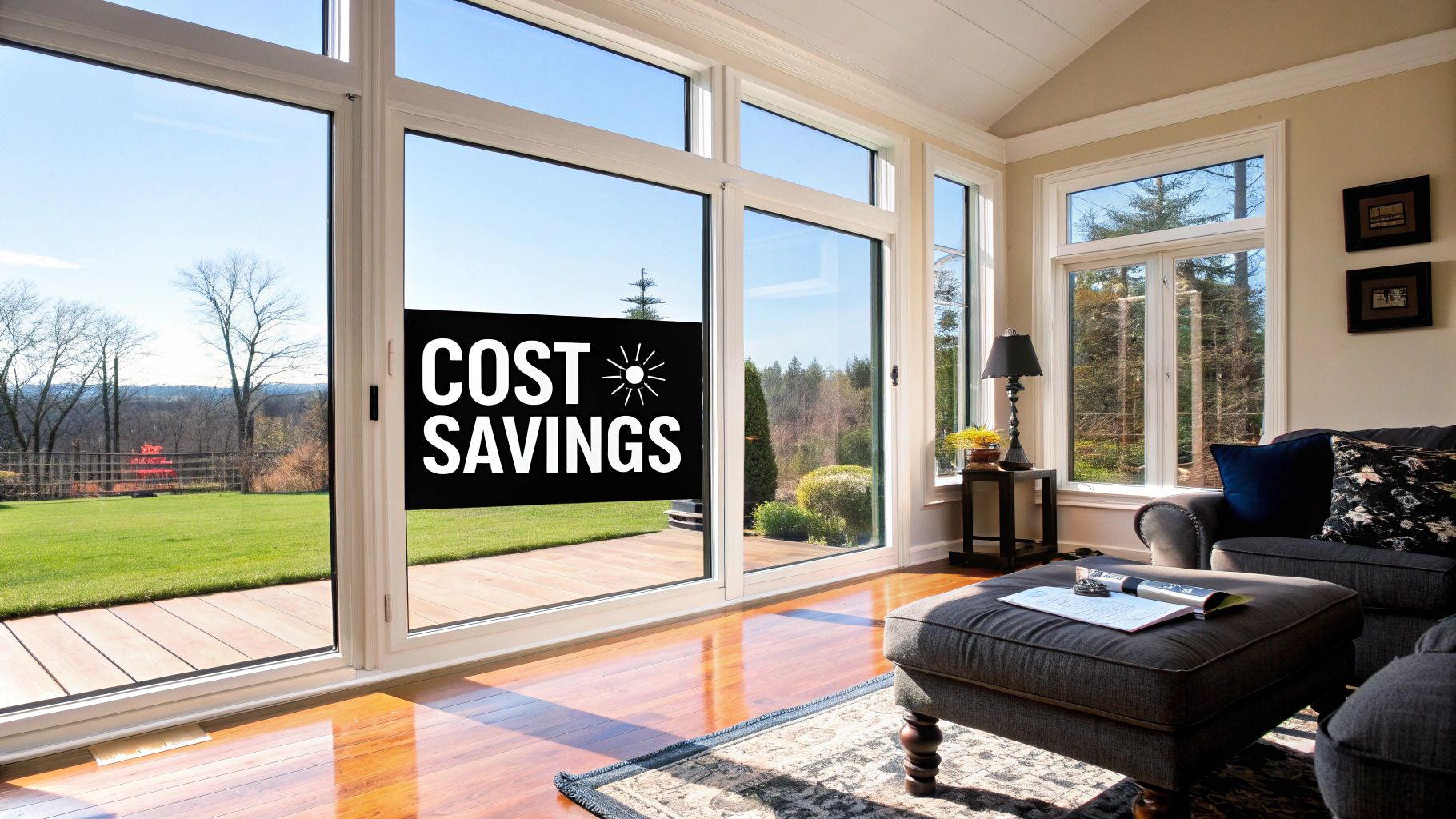
The world of energy-efficient windows is constantly evolving, offering homeowners more choices than ever before. Beyond the standard double-pane, exciting new technologies are emerging, promising significant improvements in both comfort and energy savings. Let's delve into some of the most impactful breakthroughs shaping the future of window performance.
Smart Windows: Dynamically Adjusting to Your Needs
Imagine windows that seamlessly adjust their tint throughout the day, optimizing natural light and minimizing unwanted heat. This is the promise of smart windows, incorporating technologies like electrochromic glass. Electrochromic windows use a small electrical current to change the tint, responding dynamically to changing light conditions.
This precise control over solar heat gain, glare, and natural light translates to significant reductions in energy consumption for heating and cooling.
Thermochromic Glass: Responding to Temperature Changes
Another remarkable development is thermochromic glass. This innovative technology adjusts its tint in response to temperature fluctuations, all without the need for electronics. A special coating on the glass darkens automatically when temperatures rise, reducing solar heat gain.
As temperatures cool, the glass becomes clearer, allowing more natural light and passive solar heating. This self-regulating feature offers substantial energy savings without any user intervention.
Advanced Frame Materials: Eliminating Thermal Bridges
Traditional window frames can act as thermal bridges, pathways for heat to escape or enter your home. Advanced frame materials, such as fiberglass and composite materials, are minimizing this issue. These materials offer far superior insulation compared to traditional wood or aluminum.
This enhanced insulation significantly reduces heat transfer, leading to improved overall window performance and energy efficiency.
To help you compare these technologies, we've compiled the following table:
Introduction to the Table: The table below provides a side-by-side comparison of different energy-efficient window technologies, outlining their energy-saving potential, cost, lifespan, and ideal climate applications.
| Technology Type | Energy Savings Potential | Cost Range | Lifespan | Best Climate Applications |
|---|---|---|---|---|
| Double-Pane | Moderate | Low to Mid-range | 20-30 years | Most climates |
| Electrochromic (Smart) | High | High | 20+ years | Hot and sunny climates |
| Thermochromic | Moderate to High | Mid-range to High | 20+ years | Variable temperature climates |
| Fiberglass/Composite Frame | Moderate | Mid-range to High | 30+ years | All climates |
Conclusion of the Table: As the table illustrates, each window technology offers a unique set of benefits and cost considerations. Choosing the right technology depends on your specific climate, budget, and desired energy savings goals.
The market for energy-efficient windows is booming, driven by these continuous technological advancements. Valued at approximately USD 22.76 billion in 2024, it's projected to reach USD 42.78 billion by 2033, growing at a CAGR of 6.9%. This growth reflects the rising demand for sustainable building materials and the increasing recognition of their long-term value. Technological advancements, like smart windows with electrochromic and thermochromic capabilities, are fueling this expansion. Explore this topic further. You might be interested in: Additional Resources.
Integrating with Smart Home Systems
These advancements are seamlessly integrating with modern smart home systems. Smart windows can be programmed to respond to weather forecasts, occupancy sensors, and even your personal preferences, creating truly intelligent living environments. This automation maximizes energy efficiency while enhancing comfort and convenience.
Choosing the Right Technology for Your Home
With a growing array of options available, selecting the best energy-efficient windows can feel overwhelming. Factors like your climate, budget, and aesthetic preferences will all play a role in your decision. Researching different technologies and consulting with window professionals will help you determine the most appropriate solutions for your specific needs.
For instance, homeowners in hot climates may prioritize solar control features, while those in colder regions might focus on maximizing insulation. Read also: Our sitemap. By understanding the latest technologies and their benefits, you can make informed choices that significantly improve your home's comfort, energy efficiency, and overall value.
The Real ROI: What Energy Efficient Windows Actually Save
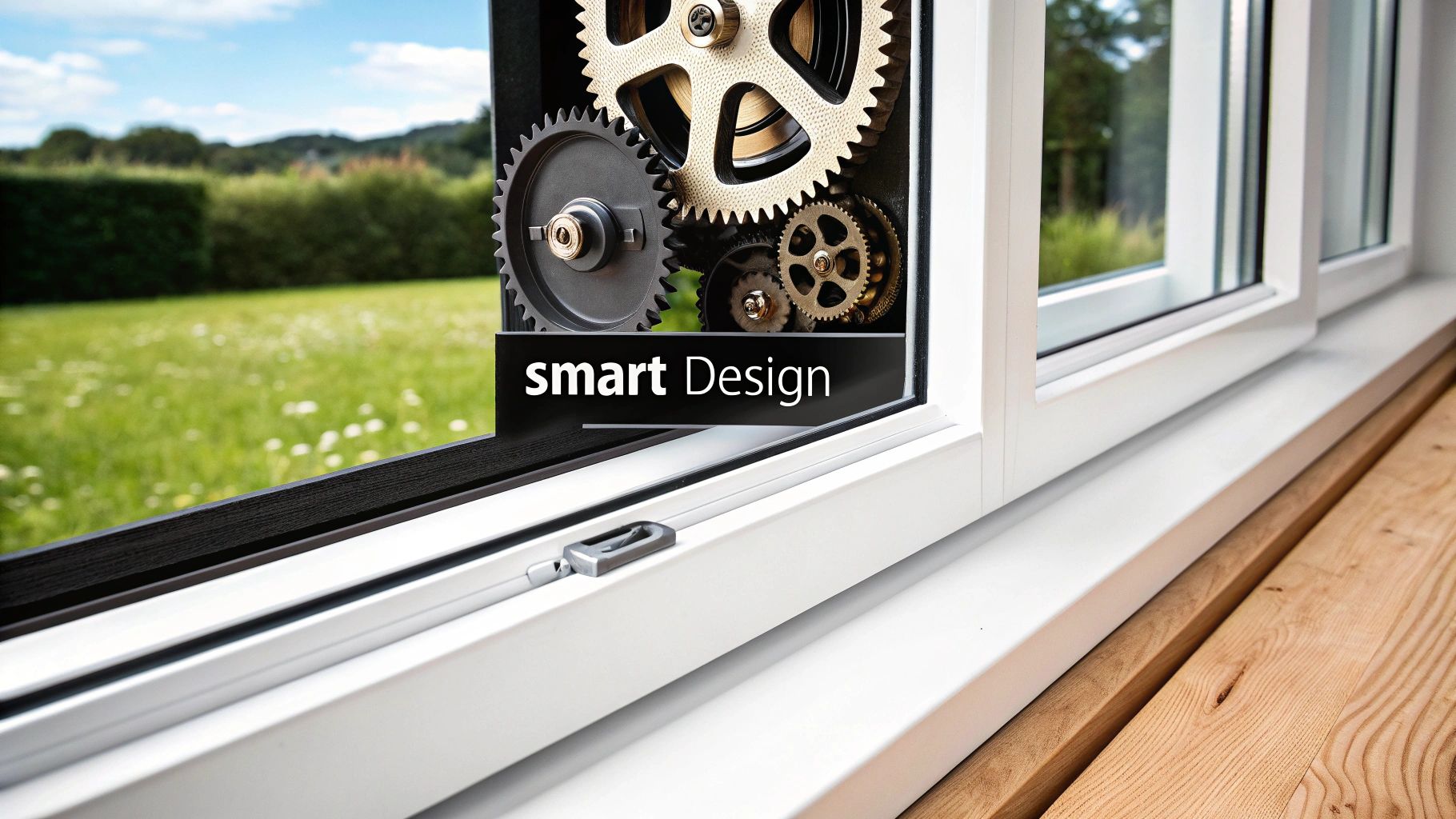
Energy efficient windows are often praised for their potential to save money. But what does that actually translate to in real-world savings? This section explores the tangible returns you can anticipate from upgrading your windows, examining factors like utility rates and the condition of your existing windows. We'll also look at how smart homeowners maximize their return on investment.
Factors Influencing Your Savings
Several key factors influence the amount you'll save with energy efficient windows. The biggest factor is the state of your current windows. Single-pane windows, for example, lose considerably more heat than older double-pane models. This means upgrading from single-pane will result in more significant savings compared to upgrading from somewhat efficient double-pane windows.
Your local climate and utility rates also play a crucial role. Homes in areas known for extreme temperatures or high energy costs will naturally see greater savings. The amount of sunlight your home receives and its orientation are additional factors that impact energy efficiency.
For example, a homeowner in a hot climate with single-pane windows could experience a dramatic drop in cooling costs after an upgrade. Someone in a moderate climate with newer double-pane windows might see a smaller, but still noticeable, decrease in their energy bills.
Maximizing Your Return: Rebates and Incentives
Many homeowners are unaware of the valuable rebates and incentives available that can significantly boost their ROI. Utility company incentives, rebates, and tax credits can all lower upfront costs and shorten the payback period. These incentives are often location-specific and offered by local utility companies or government programs. Some programs, for example, offer rebates based on the energy efficiency rating of the new windows.
Tax credits can also provide substantial savings. By taking advantage of these programs, you can effectively reduce your initial investment and see a quicker return on your energy efficient window upgrade. You might be interested in: Our Product Sitemap.
Calculating Your ROI: A Long-Term Perspective
Calculating your ROI involves looking beyond immediate energy savings to include long-term benefits. Energy efficient windows boost home resale value, making your property more appealing to buyers. They also often last longer than standard windows, reducing future replacement costs. The global market for energy-efficient windows reflects this growing trend. Valued at USD 16.34 billion in 2024, it’s projected to reach USD 34.63 billion by 2034, growing at a CAGR of 7.80%. Learn more about energy efficient windows here.
To help you estimate potential savings, we've compiled the table below:
Energy Efficient Windows ROI Calculator: Data to help homeowners estimate potential savings and payback period for energy efficient window installation.
| Climate Zone | Average Annual Savings | Typical Installation Cost | Estimated Payback Period | 20-Year Savings |
|---|---|---|---|---|
| Cold | $200 - $500 | $5,000 - $10,000 | 10-25 years | $4,000 - $10,000 |
| Moderate | $100 - $300 | $4,000 - $8,000 | 13-27 years | $2,000 - $6,000 |
| Hot | $250 - $600 | $6,000 - $12,000 | 10-24 years | $5,000 - $12,000 |
Note: These figures are estimates and can vary significantly based on individual home characteristics, local energy prices, and the specific windows chosen.
Considering these long-term benefits provides a more comprehensive picture of the true return on investment. This broader perspective enables a more informed decision about whether energy-efficient windows are the right choice for your home.
Climate-Specific Window Selection: What Actually Works
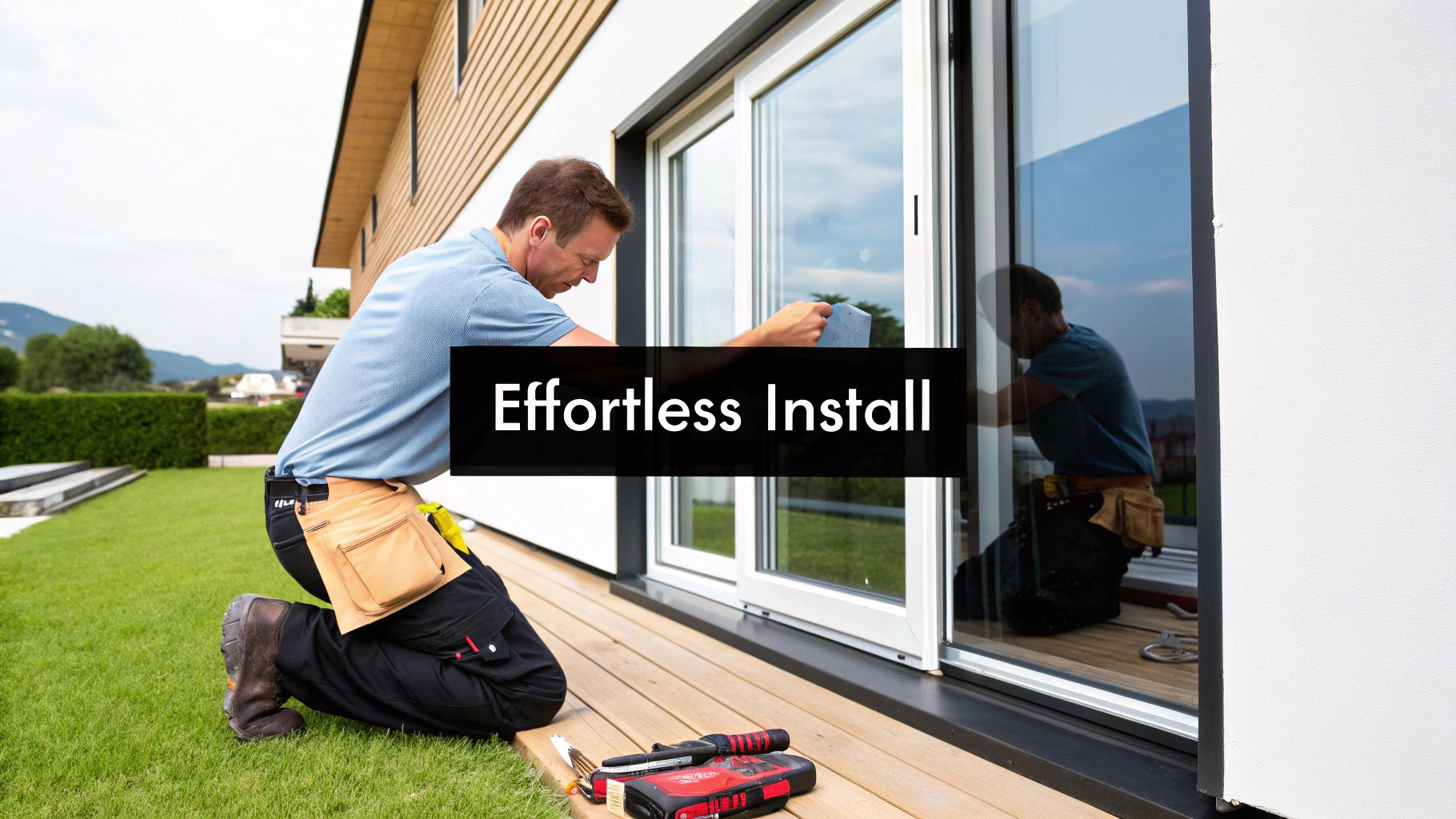
Choosing energy-efficient windows isn't a one-size-fits-all process. What's perfect for a Minnesota winter might be a poor choice for an Arizona summer. This section offers climate-specific advice to help you choose the best windows for your home. When making your selection, remember to consider how your windows contribute to overall energy efficiency, much like choosing the right roofing material, as discussed in this energy efficiency guide for metal roofing.
Understanding Your Climate's Needs
Different climates have different window performance priorities. In cold climates, minimizing heat loss with a low U-factor is key. Hot climates, on the other hand, need windows that block solar heat gain, which is measured by a low Solar Heat Gain Coefficient (SHGC). Mixed climates require a balance of both. Coastal regions often prioritize impact resistance and protection from the effects of salty air.
For a cold climate home, triple-pane windows with a low U-factor and gas fills can significantly reduce heat loss. However, in a hot, sunny climate, windows with a low SHGC and special coatings are more effective, even if the U-factor isn't as low.
Home Orientation and Window Selection
The direction your windows face greatly affects their performance. South-facing windows in colder areas can capture valuable solar heat gain in the winter. West-facing windows in hot climates can overheat in the afternoon sun.
Therefore, window selection should account for home orientation. Maximizing solar heat gain on south-facing windows in cold climates can reduce heating costs. Minimizing it on west-facing windows in hot climates lowers cooling bills.
Regional Factors: Beyond Temperature
Beyond general climate zones, factors like elevation, humidity, and local wind patterns also impact window performance. Higher elevations experience greater temperature swings, requiring windows that perform well in both hot and cold conditions. High humidity can increase condensation, making good ventilation and window seals crucial.
Strong winds can also cause air leakage through windows. A tight seal and a low air leakage rating are essential in windy areas. For further information, you can learn more about climate-specific window selection. Considering these regional factors will help you choose windows that perform optimally in your specific location.
Tailoring Your Choice: Climate-Specific Recommendations
-
Extreme Cold: Triple-pane windows are recommended, with low U-factors (below 0.20), warm-edge spacers, and argon or krypton gas fills.
-
Intense Heat: Focus on windows with low SHGC ratings (below 0.25), specialized solar control coatings, and excellent air sealing.
-
Mixed Climates: Find a balance between U-factor and SHGC. Double or triple-pane windows with suitable coatings can provide year-round performance.
-
Coastal Environments: Impact-resistant glass and corrosion-resistant frames are essential to withstand harsh weather and salty air.
By understanding your climate's specific needs and choosing windows accordingly, you can maximize energy efficiency, comfort, and the long-term value of your investment.
Installation Excellence: Where Most Energy Savings Fail
Proper installation is crucial for maximizing the energy efficiency of your new windows. Think of it like a solar installation: even the best equipment won't perform optimally without expert installation. Similarly, even top-tier energy-efficient windows can underperform if not installed correctly. This can lead to significant energy loss and unexpectedly high utility bills. Let's explore common installation mistakes that can sabotage your energy savings.
Common Installation Errors: Where Things Go Wrong
Small installation oversights can create big problems when it comes to energy efficiency. One common culprit is inadequate air sealing around the window frame. Even tiny gaps and cracks can allow air infiltration, undermining the insulating properties of your new windows.
Another frequent mistake is insufficient cavity insulation. The space between the window frame and the wall acts as a thermal barrier, and inadequate insulation here allows heat to escape. Improperly installed flashing, designed to prevent water damage, can also lead to energy loss and costly repairs down the line.
Asking the Right Questions: Finding a Qualified Installer
Selecting a qualified installer is as important as choosing the right windows. Don’t hesitate to ask potential installers pointed questions about their experience and techniques. This can help you identify true professionals committed to quality workmanship.
Some key questions to ask include their air sealing methods, the type of insulation they use, and their knowledge of local building codes. Requesting references and examples of their previous work is also essential. A reputable installer will be happy to provide these details and address any concerns you may have.
The Installation Process: Step-by-Step Excellence
A professional window installation involves a series of precise steps. It begins with a pre-installation assessment to evaluate the existing windows and surrounding structure. This assessment informs the installation strategy and identifies potential issues.
The existing window is then removed, and the opening is meticulously prepared for the new window. The new window is carefully positioned, secured, and sealed with airtight precision. Insulation is added to the cavity between the window and wall. Finally, interior and exterior trim complete the installation.
Seasonal Considerations and Quality Control
Installers must adapt their techniques to the specific challenges of each season. During colder months, preventing air leaks and ensuring proper insulation is paramount. In warmer weather, they must account for expansion and contraction due to temperature changes.
Before finalizing payment, conduct a thorough quality control check. Inspect for gaps around the frame, ensure smooth window operation, and examine the interior and exterior finishes for any imperfections.
Warning Signs and Verification Methods
Be on the lookout for warning signs that indicate potential installation problems. Drafts around the window, condensation between glass panes, and difficulty opening or closing the window are all red flags.
Simple verification methods can help confirm proper installation. A visual inspection can often reveal obvious gaps or cracks. Using a handheld infrared thermometer can detect temperature differences around the window frame, pinpointing areas with air leaks. These steps will help ensure that your new energy-efficient windows perform as expected and deliver the promised savings.
Preserving Performance: Essential Maintenance Strategies
Energy-efficient windows are a substantial investment meant to improve comfort and reduce energy costs. But like any investment, they need proper care to ensure optimal performance for years to come. This means understanding the maintenance practices that will preserve their efficiency and extend their lifespan.
Cleaning For Clarity and Efficiency
Keeping your windows clean is crucial for maintaining energy efficiency and extending the life of the low-e coatings. These coatings improve window insulation but can be damaged by harsh cleaning products. Avoid abrasive cleaners and choose gentle solutions like mild soap and water.
Also, pay attention to the seals around the glass. Harsh chemicals can degrade these seals, causing air leakage and a loss of insulating gas fills, such as argon. This can drastically reduce the window's ability to prevent heat transfer.
Seasonal Inspections: Catching Problems Early
Regular inspections are key to identifying potential problems before they become expensive repairs. Each season brings unique challenges for your windows, requiring specific inspection procedures.
-
Spring: Look for signs of winter damage, like cracks or gaps in the seals. Clean the windows thoroughly after the harsh winter weather.
-
Summer: Check how well the windows operate. Make sure they open and close smoothly, and look for any wear and tear on the hardware.
-
Fall: Clean the windows again to remove debris and prepare them for winter. Inspect the weatherstripping for any damage or deterioration.
-
Winter: Keep an eye out for condensation buildup, which could indicate air leakage or a failed seal.
These simple seasonal checks can help you identify small issues before they become major problems. For example, replacing worn weatherstripping is a relatively inexpensive fix that can dramatically improve window performance.
Frame-Specific Maintenance: Addressing Unique Vulnerabilities
Different window frame materials have unique vulnerabilities and require specific maintenance approaches. Check out our guide on maintenance tips and tricks.
-
Vinyl: Vinyl frames are generally low-maintenance but can become brittle in extreme cold. Regularly cleaning them with mild soap and water helps maintain their appearance and flexibility.
-
Fiberglass: Fiberglass frames are extremely durable but can fade over time. Occasional cleaning and applying a protective sealant can help preserve their color and finish.
-
Wood: Wood frames need regular painting or staining to protect them from moisture and rot. Inspecting for signs of decay and addressing them quickly can prevent costly repairs.
-
Aluminum: Aluminum frames are strong and corrosion-resistant, but the finish can scratch. Avoid abrasive cleaners and use soft cloths for cleaning.
Understanding the specific needs of your window frames will help ensure their longevity and continued performance.
Extending Lifespan: Advanced Maintenance Techniques
Some maintenance tasks, while more involved, can significantly extend the lifespan of your energy-efficient windows. Weatherstripping replacement, for instance, restores a tight seal and eliminates drafts.
Hardware lubrication ensures smooth operation and minimizes wear and tear on moving parts. For windows with failed gas fills, seal restoration can recapture the insulating benefits of the gas. However, this usually requires professional help.
For smart windows and other advanced technologies, specialized care for the electronic components and sensors is essential. Consult the manufacturer's guidelines or seek professional assistance to keep these features working correctly. By investing in these maintenance strategies, you protect your investment and ensure continued comfort and energy savings for years to come. Regular maintenance not only enhances performance but also maximizes your ROI, further emphasizing the long-term value of energy-efficient windows. Additionally, maintaining your windows can help you qualify for certain energy efficiency tax credits, such as those for insulation or other home improvements, which often incentivize comprehensive energy-saving practices. These tax advantages, similar to those offered for Nevada Clean Energy Fund tax incentives and rebates, can further increase the financial benefits of well-maintained energy-efficient windows.
Beyond Energy: The Unexpected Benefits Worth Considering
While saving money on utility bills is a major motivator for upgrading to energy-efficient windows, many homeowners find additional perks. These often unexpected benefits truly enhance their quality of life. These improvements go beyond simple energy savings and contribute to a more comfortable, healthier, and more valuable home.
A Quieter Home: Noise Reduction Benefits
Energy-efficient windows, especially those with multiple panes of glass and laminated glass, offer noticeable noise reduction. The thicker glass and the air or gas-filled spaces between the panes create sound barriers. This effectively muffles outside noise, creating a more peaceful indoor space. This is especially helpful for homes near busy streets, airports, or other noise pollution sources. Imagine enjoying a quiet evening, undisturbed by traffic or neighborhood activity. This increased tranquility improves sleep, reduces stress, and creates a more relaxing home.
Protecting Your Belongings: UV Protection and Preservation
The sun's ultraviolet (UV) rays can fade and damage furniture, flooring, artwork, and other valuables. Energy-efficient windows with low-e coatings block a large percentage of these damaging rays. This protection preserves the color and condition of your belongings, potentially saving you thousands of dollars in replacements. This means your furniture will stay vibrant and your artwork will be safe from sun damage.
Enhanced Comfort: Eliminating Drafts and Cold Spots
Drafty windows can create uncomfortable areas in your home, especially during extreme weather. Energy-efficient windows form a tighter seal, reducing drafts and cold spots near windows. This improves overall comfort and makes previously unusable areas of your home more enjoyable. Picture sitting by the window on a cold day without feeling a chilly draft. This increased comfort applies to all seasons, making your home more pleasant year-round.
Healthier Indoor Environment: Reduced Condensation and Mold
Condensation on windows can lead to mold, which can negatively impact indoor air quality and damage window frames. Energy-efficient windows reduce condensation by minimizing temperature differences between the inside and outside glass surfaces. This helps prevent mold growth, contributing to a healthier home and extending the life of your windows. This improved air quality is especially helpful for people with allergies or respiratory sensitivities.
Improved Mood and Productivity: Natural Light Benefits
Natural light plays a crucial role in regulating mood, improving sleep, and boosting productivity. Energy-efficient windows, while insulating well, also allow plenty of natural light into your home. This can create a brighter, more welcoming space and contribute to a more positive and productive atmosphere. This brighter, more inviting environment can boost mood and productivity, making your home more enjoyable and functional.
Aging in Place: Consistent Temperatures and Wellbeing
For those planning to age in place, consistent temperatures are crucial for health and wellbeing. Energy-efficient windows help maintain stable indoor temperatures, reducing the risk of temperature-related health problems. This creates a safer and more comfortable home for seniors. Stable temperatures help avoid drastic temperature swings, which can be especially important for seniors with health conditions affected by temperature changes.
Investing in energy-efficient windows provides many benefits beyond just energy savings. From a quieter and more comfortable home to improved indoor air quality and UV protection, these advantages improve your quality of life and increase your home's overall value.
Ready to experience the Gladiator difference? Upgrade your home with our high-quality, energy-efficient windows and doors, custom-made to fit your needs and budget. Visit Gladiator Window and Doors today to explore our wide selection of extra-large sliding doors, pivot doors, bi-fold doors, panoramic doors, folding windows, and fully loaded pergolas. We offer the lowest prices in the USA, backed by our Best Offer Guarantee. Don't settle for less – choose Gladiator for superior quality, unbeatable value, and the best warranty in the industry.

















